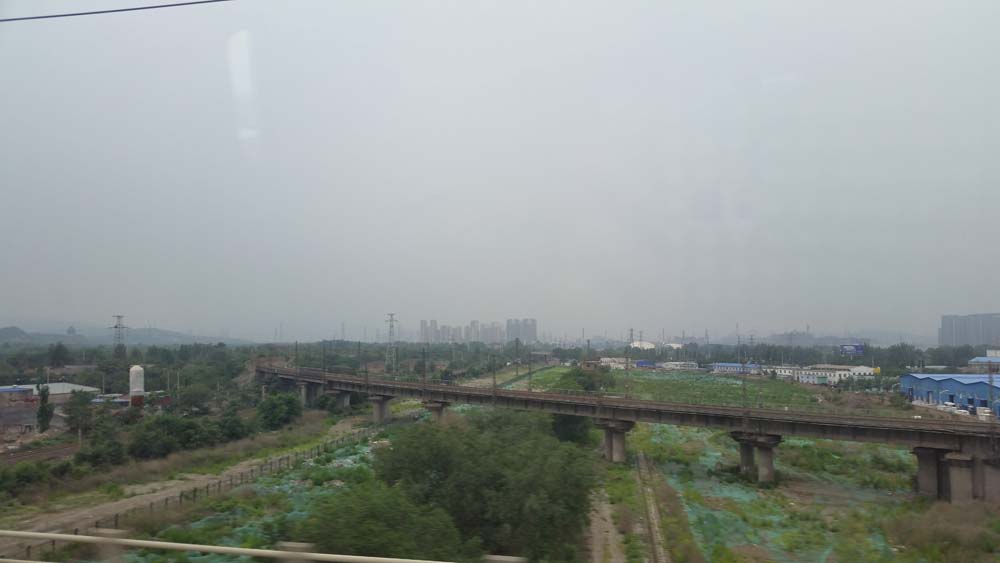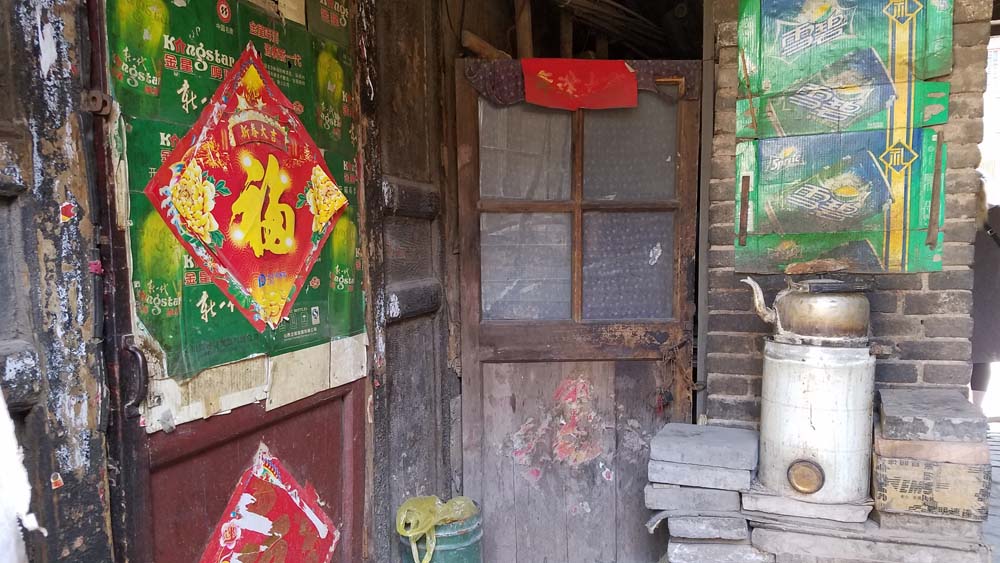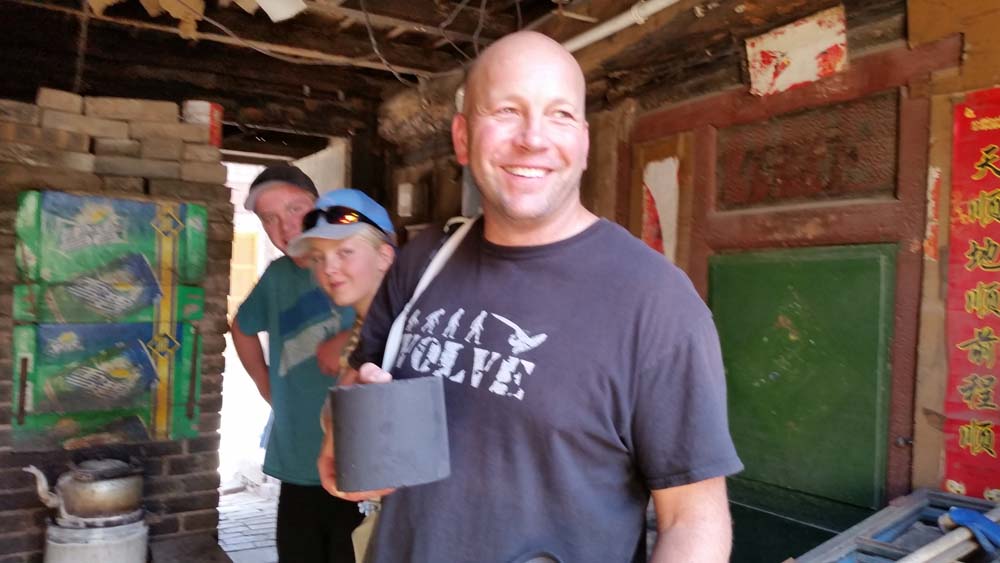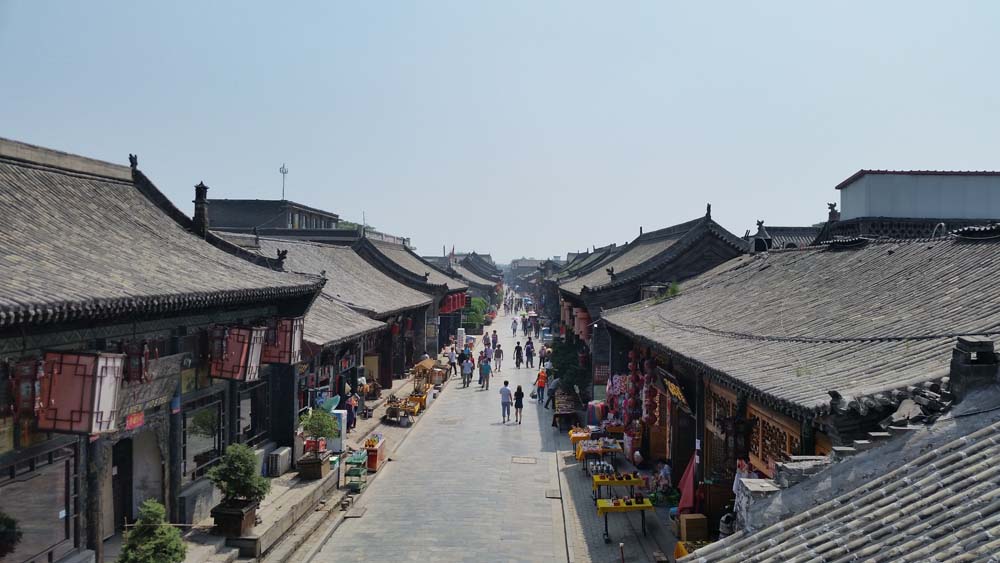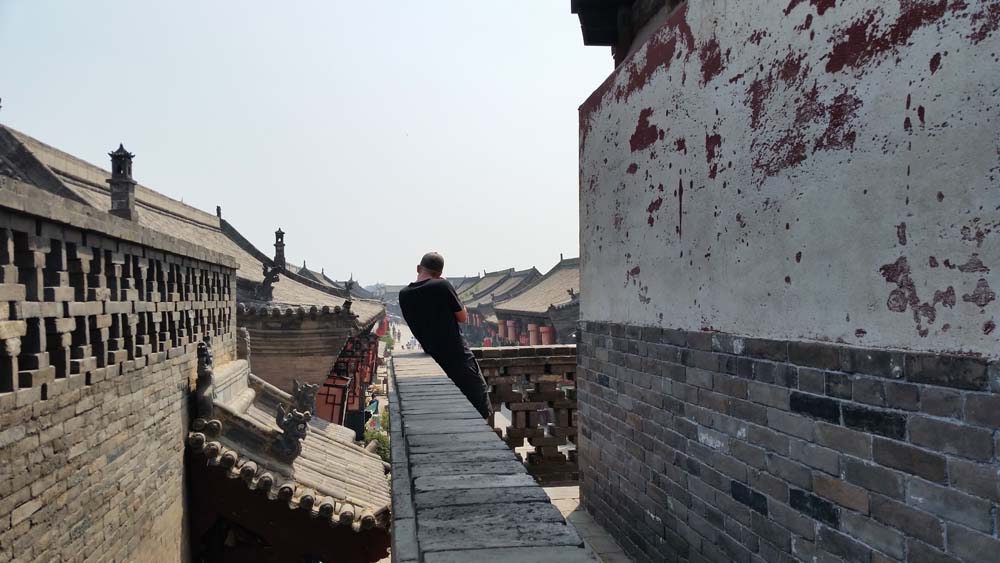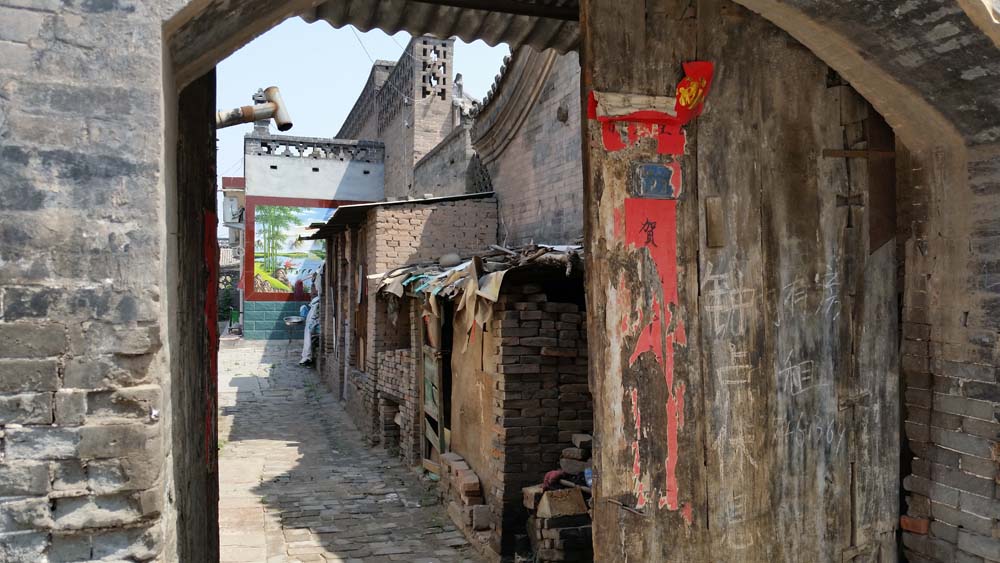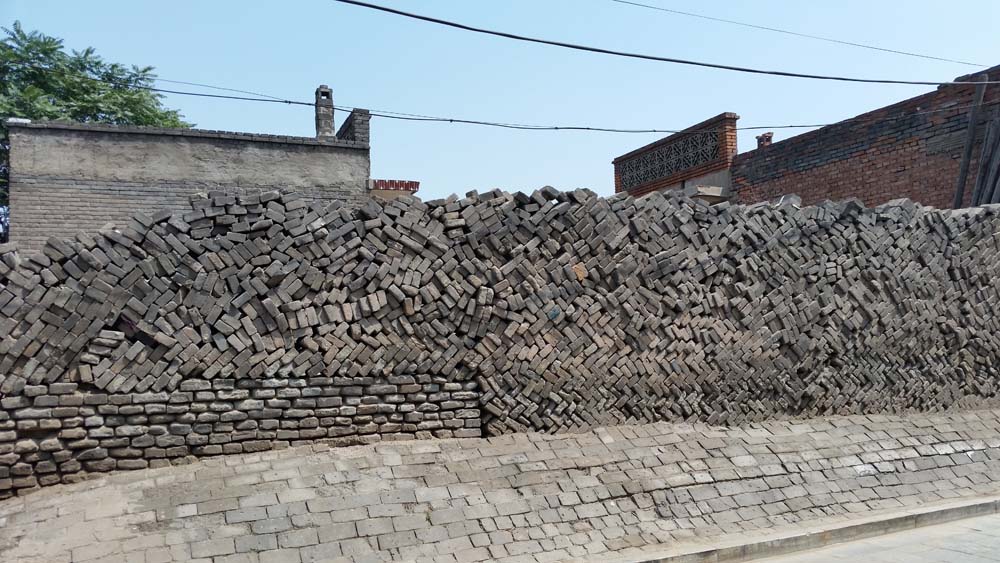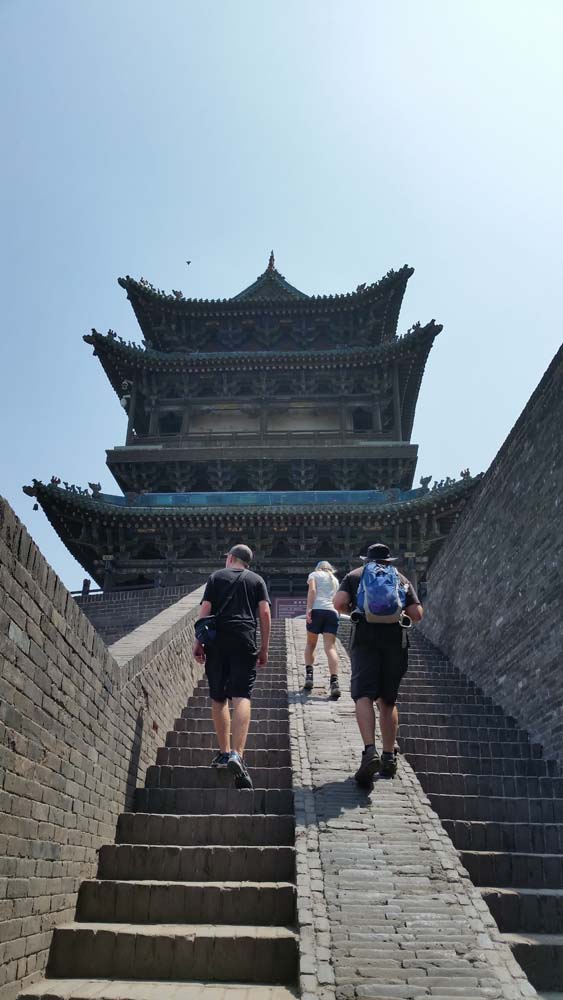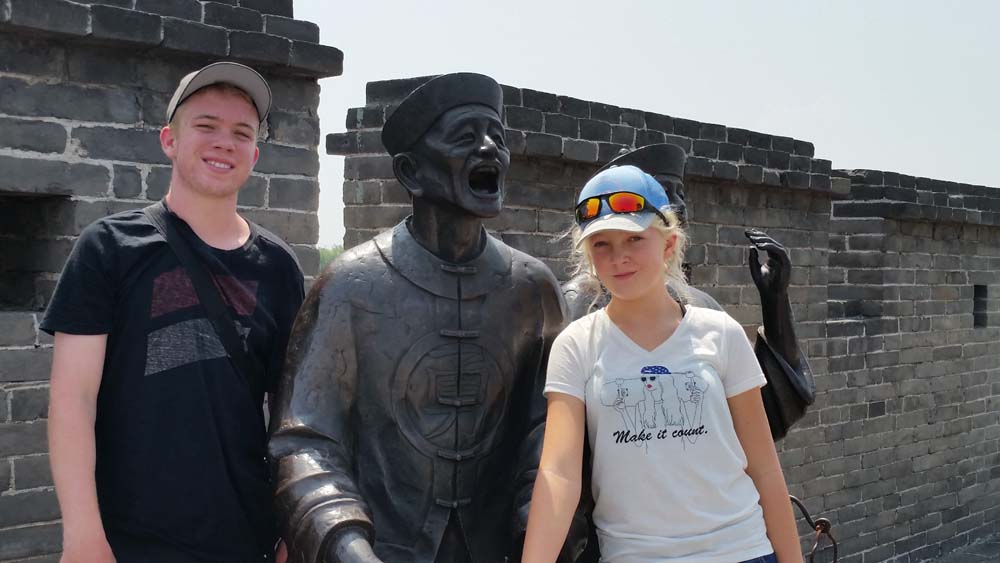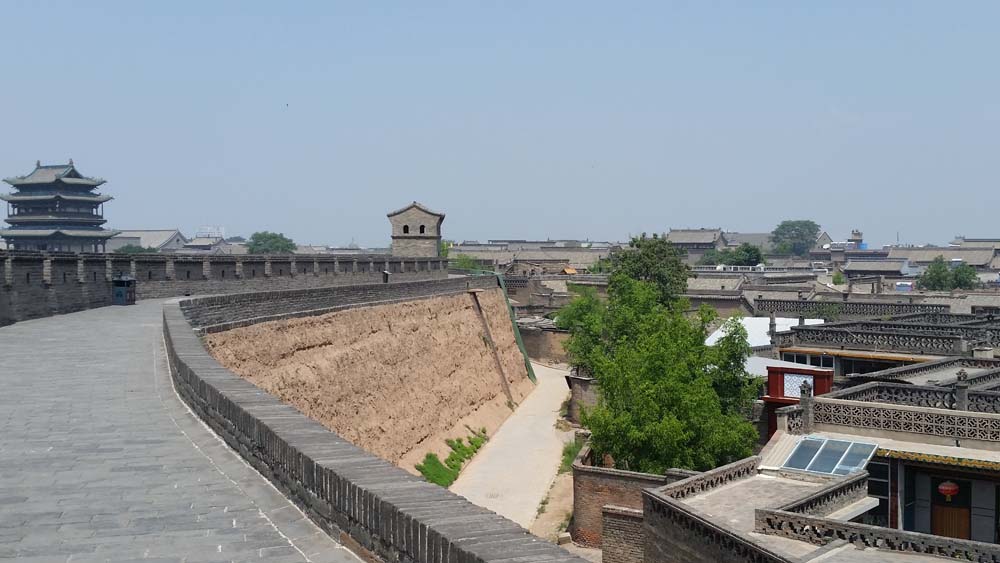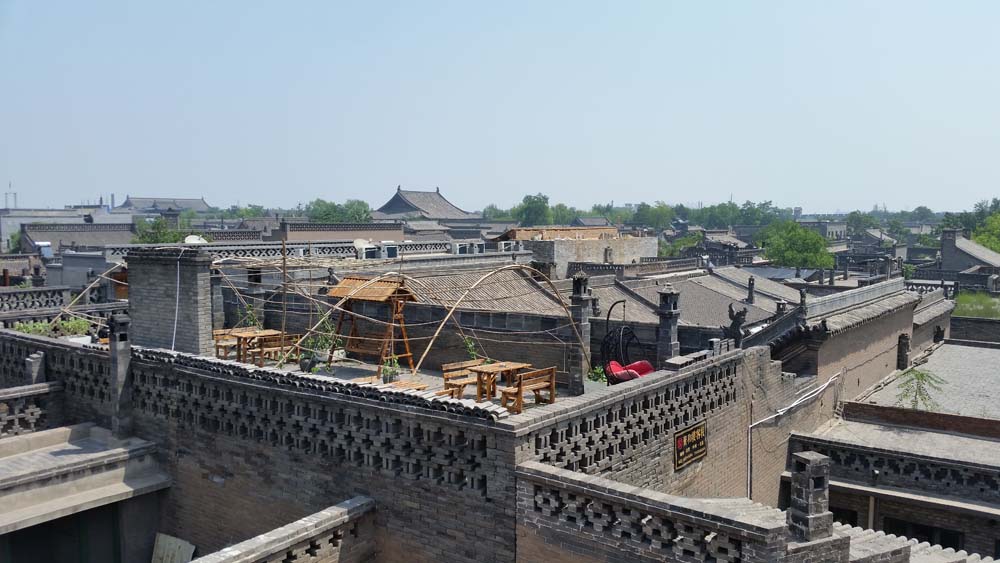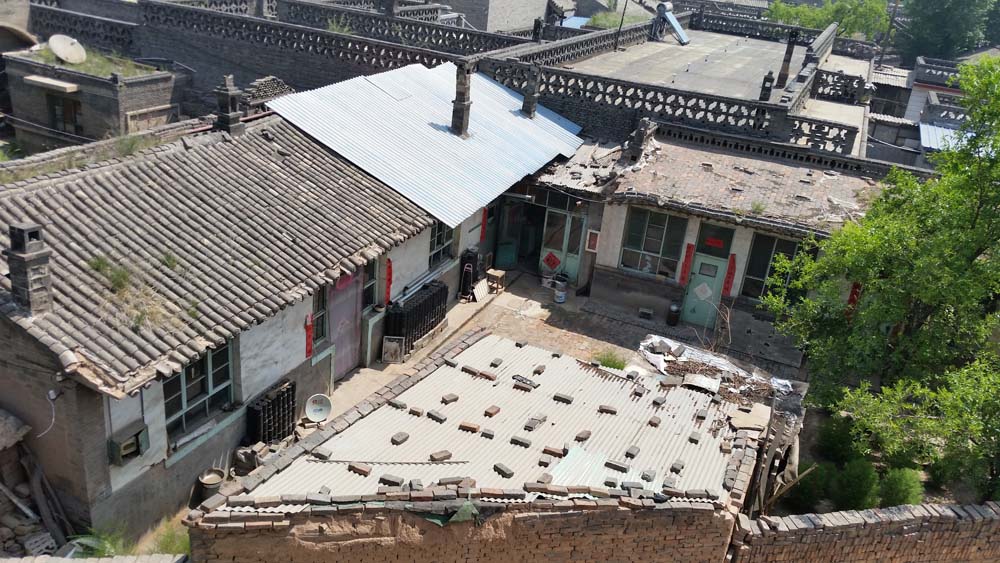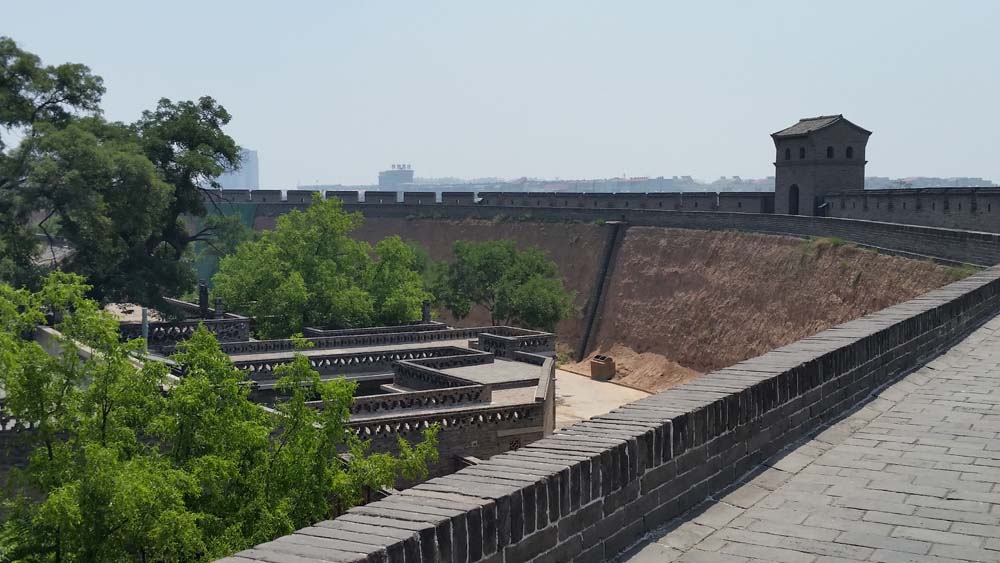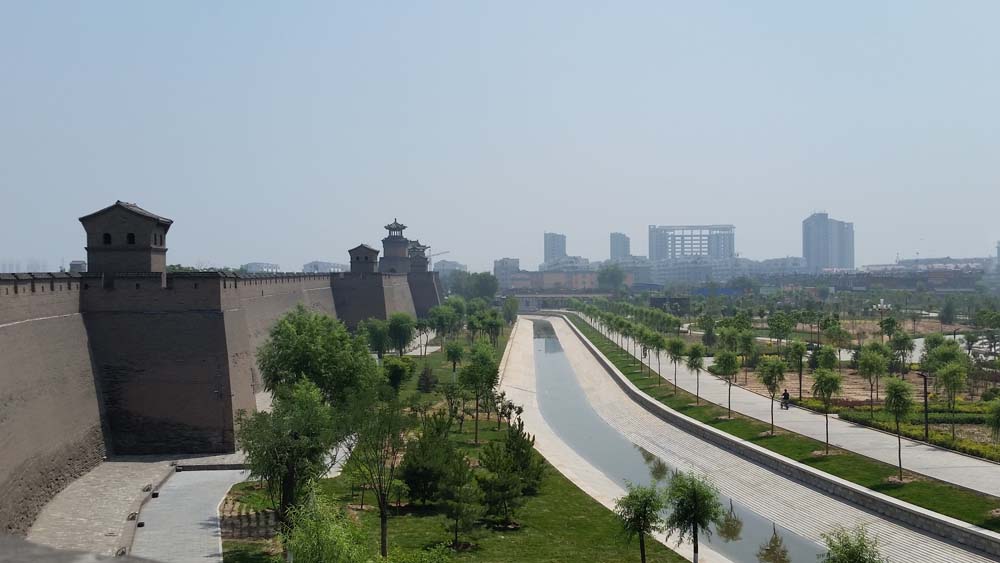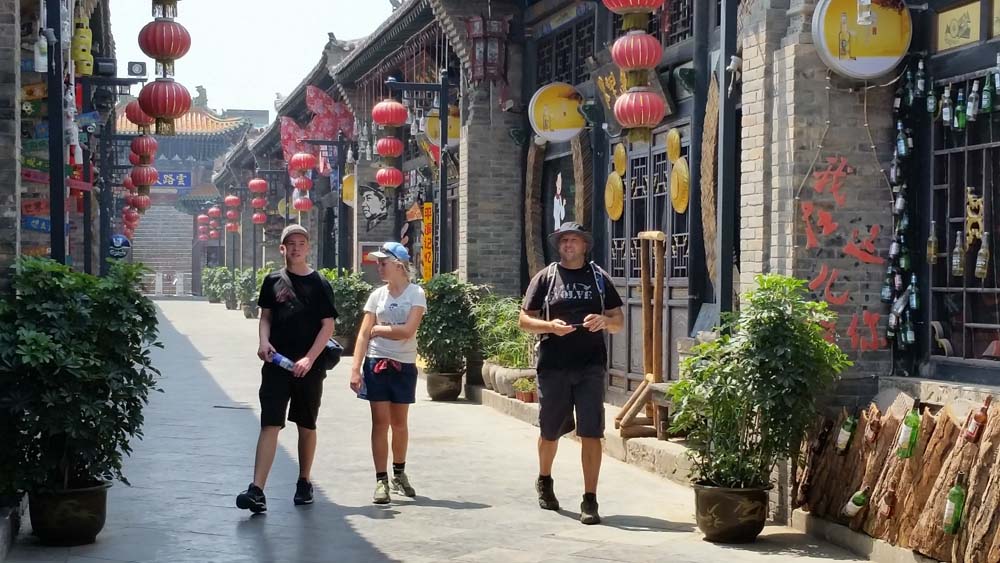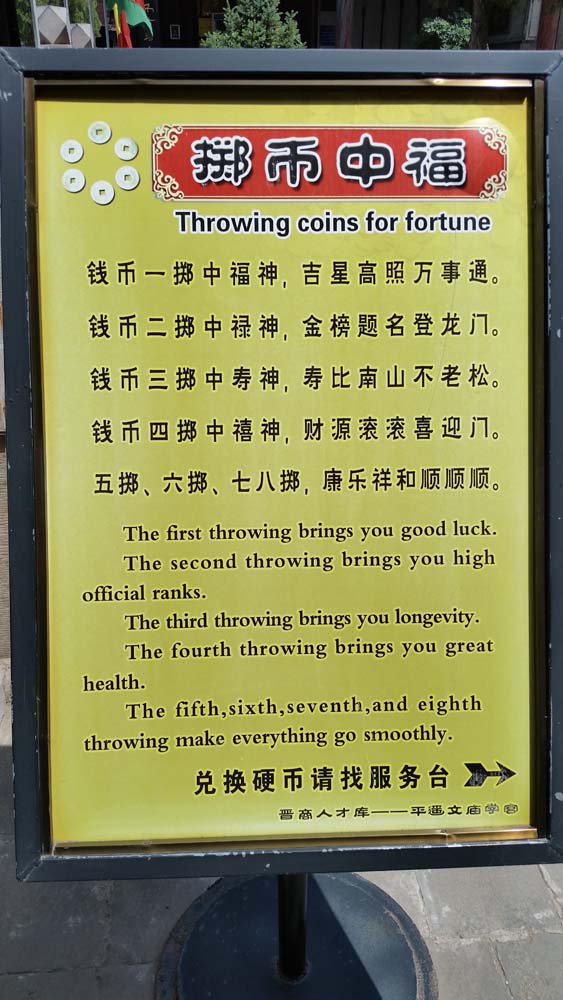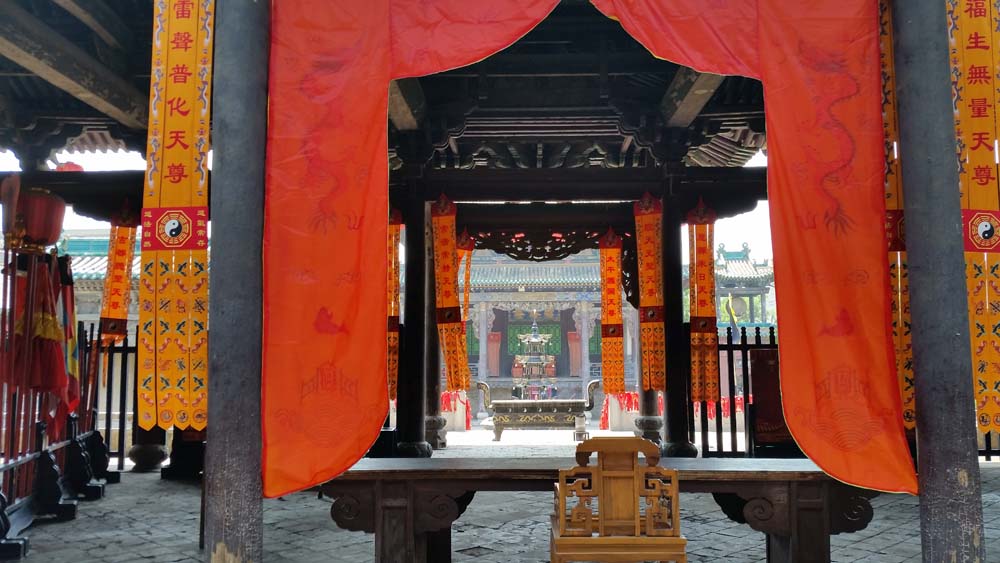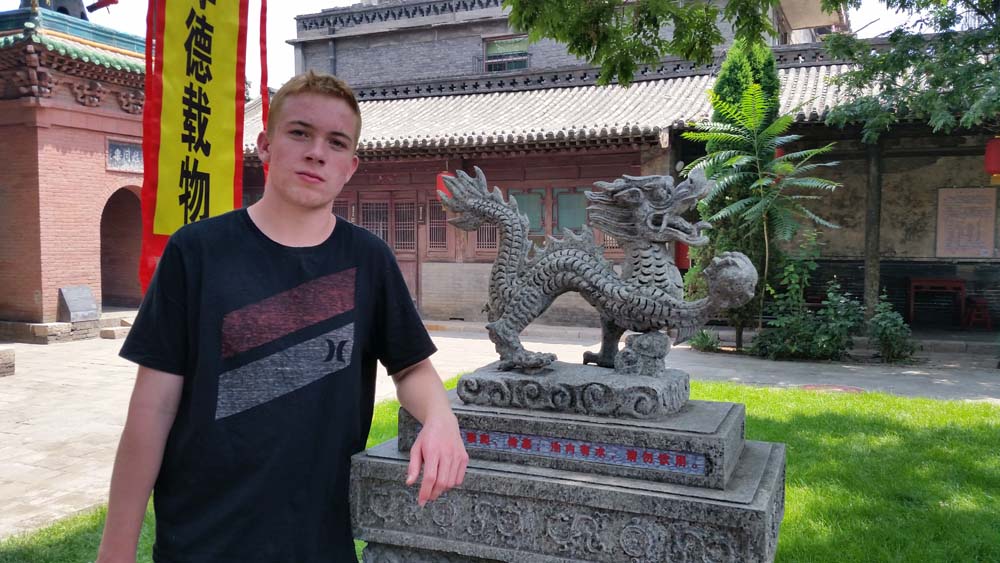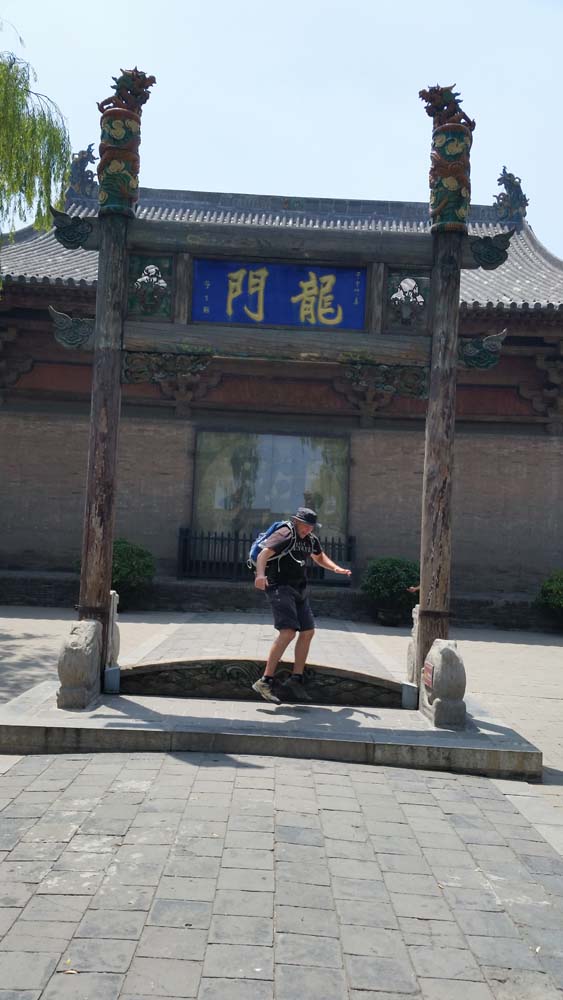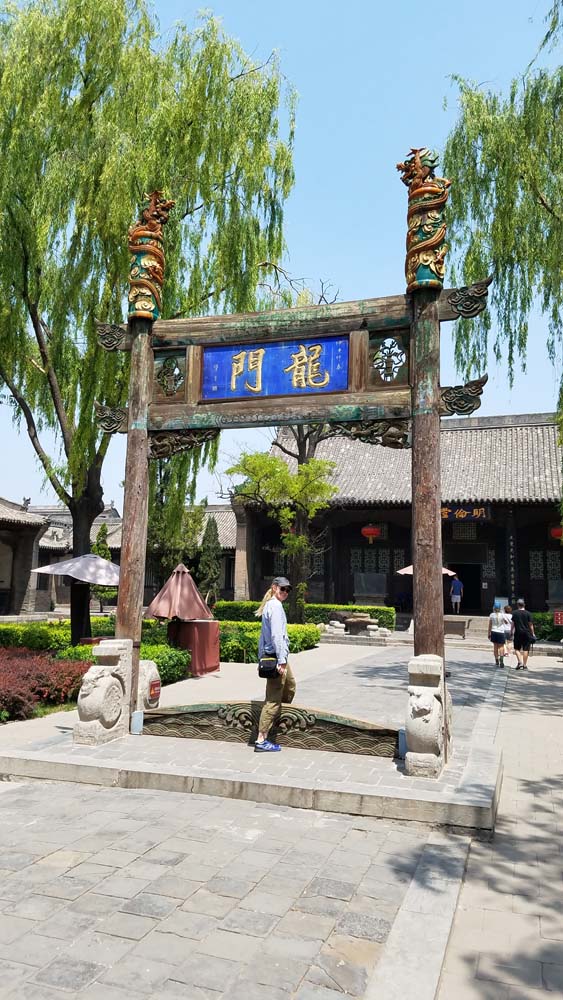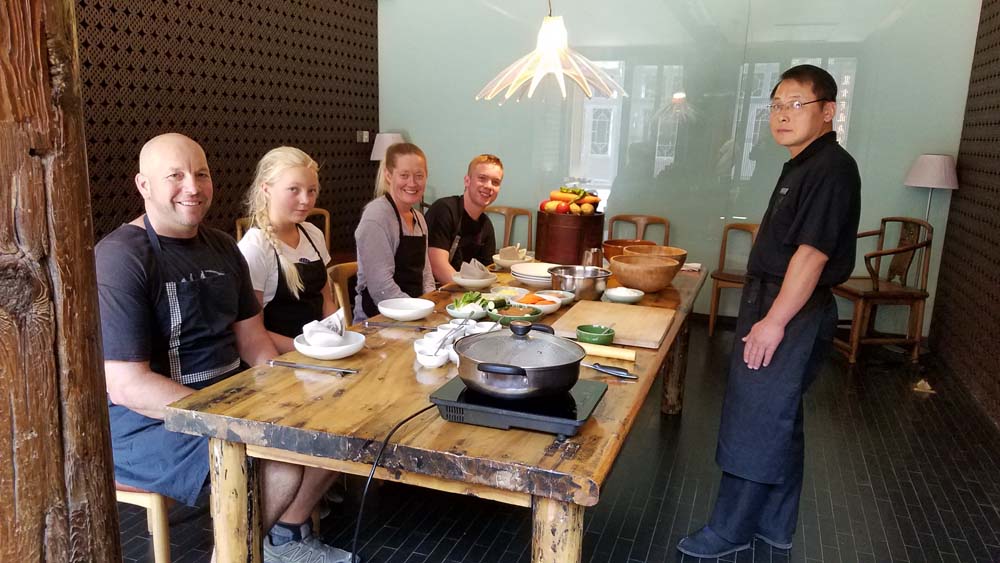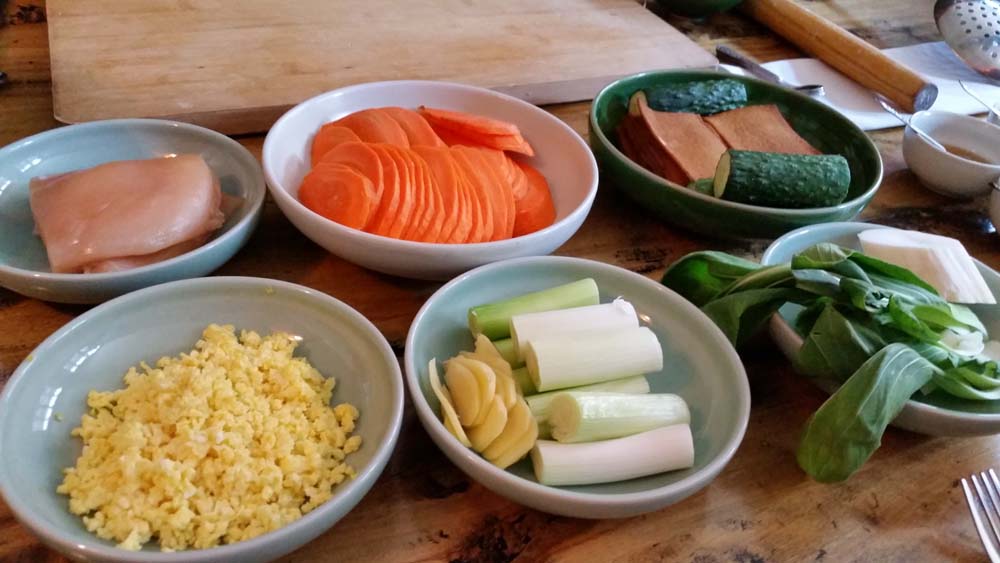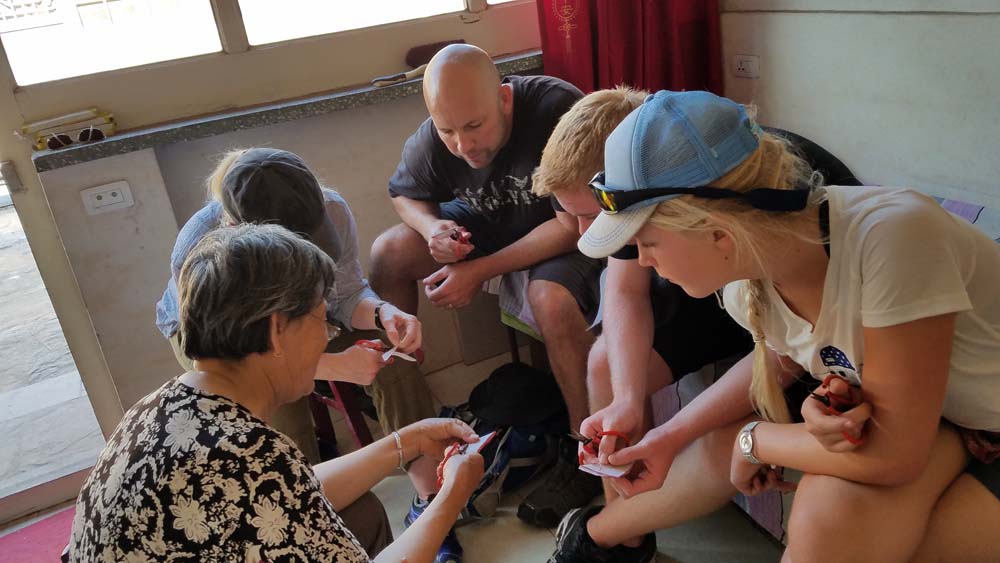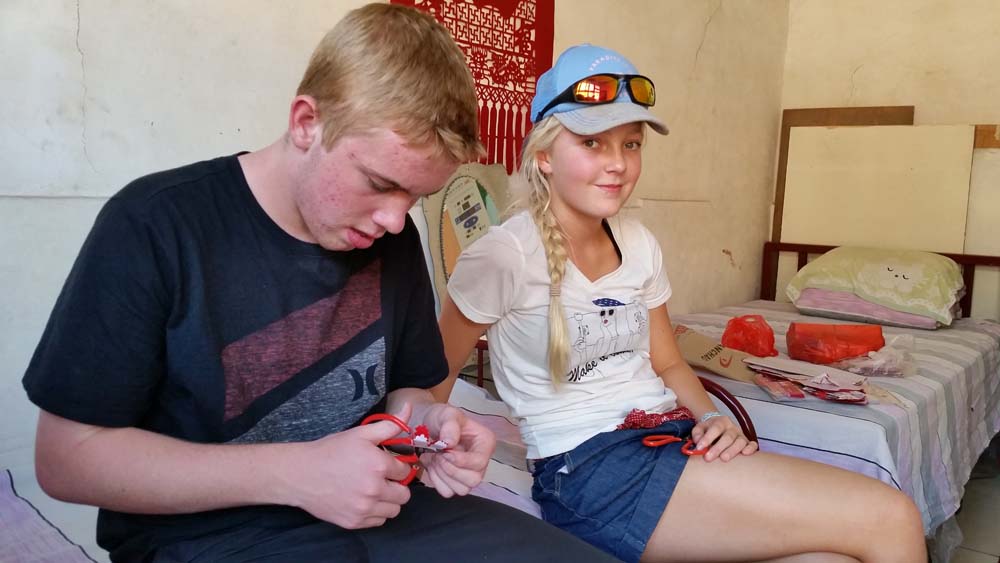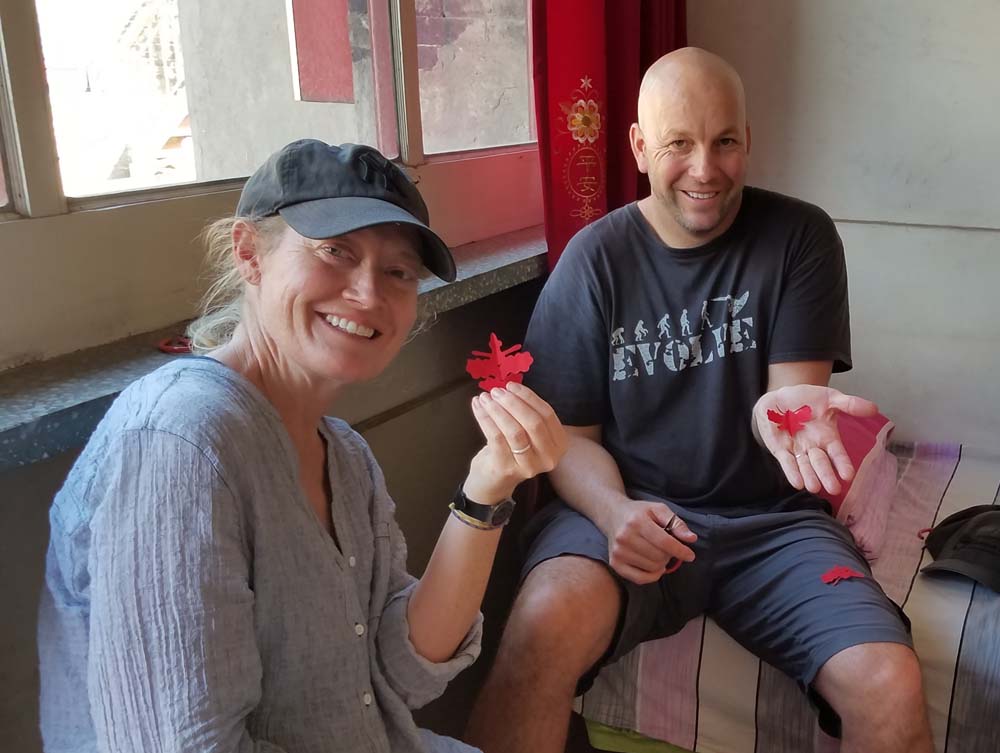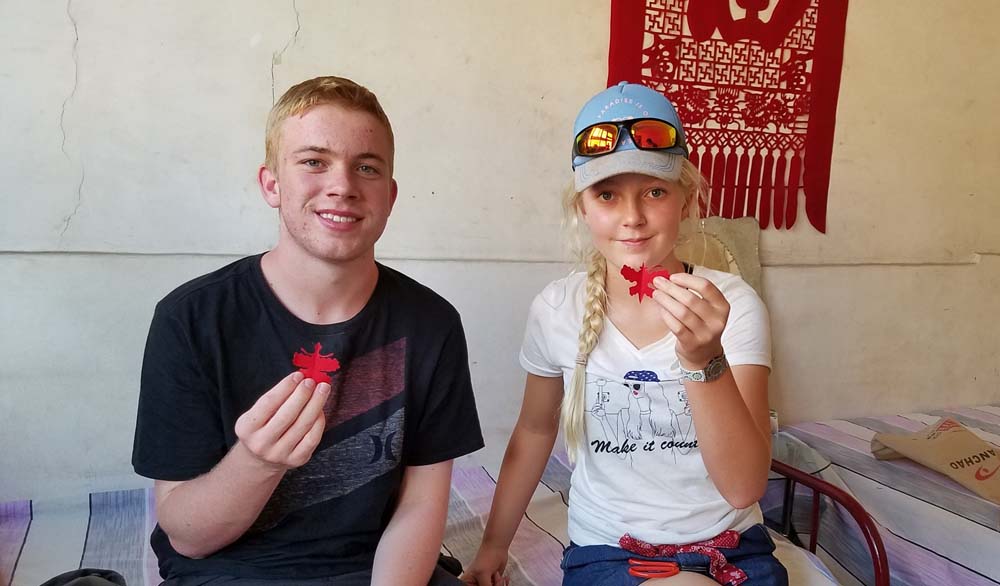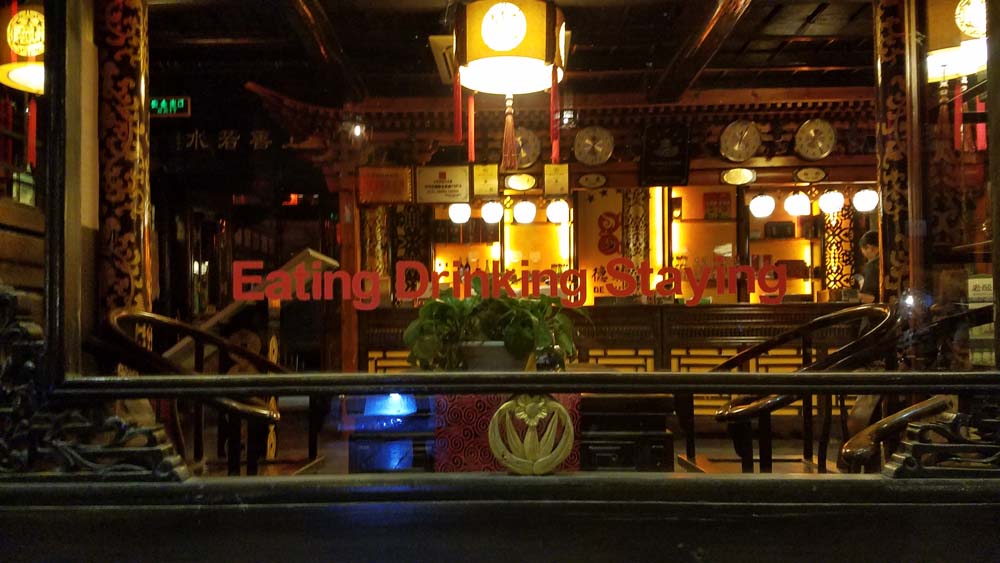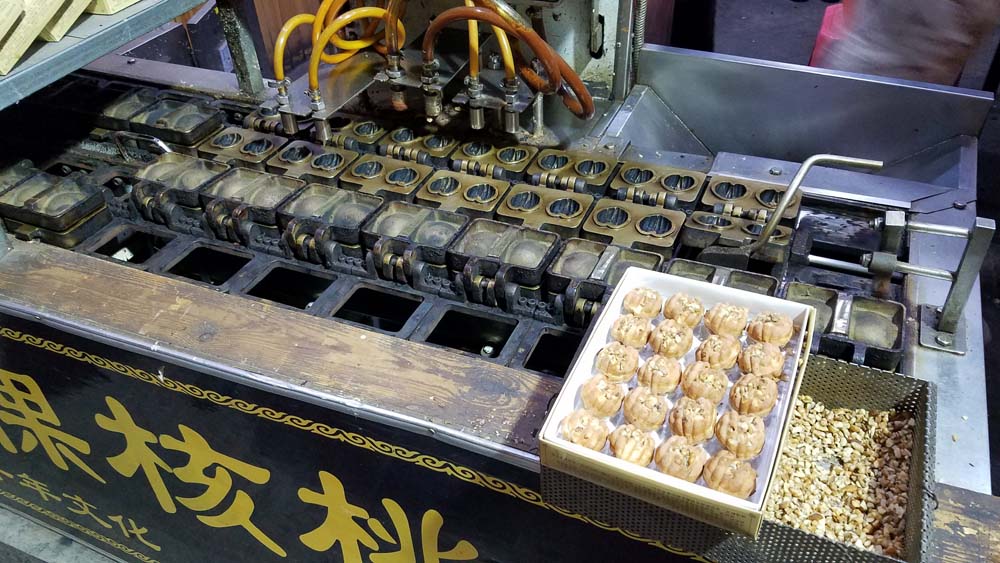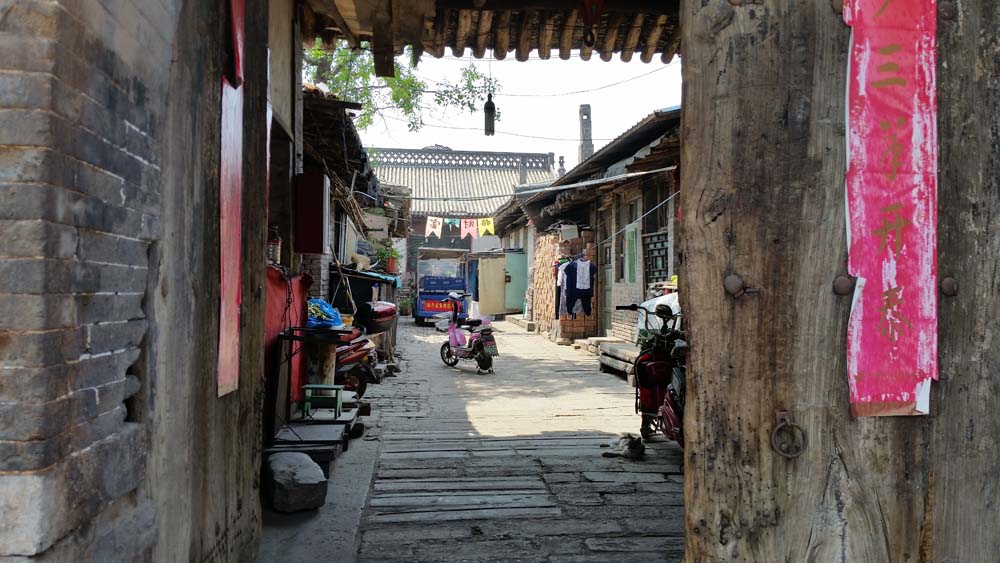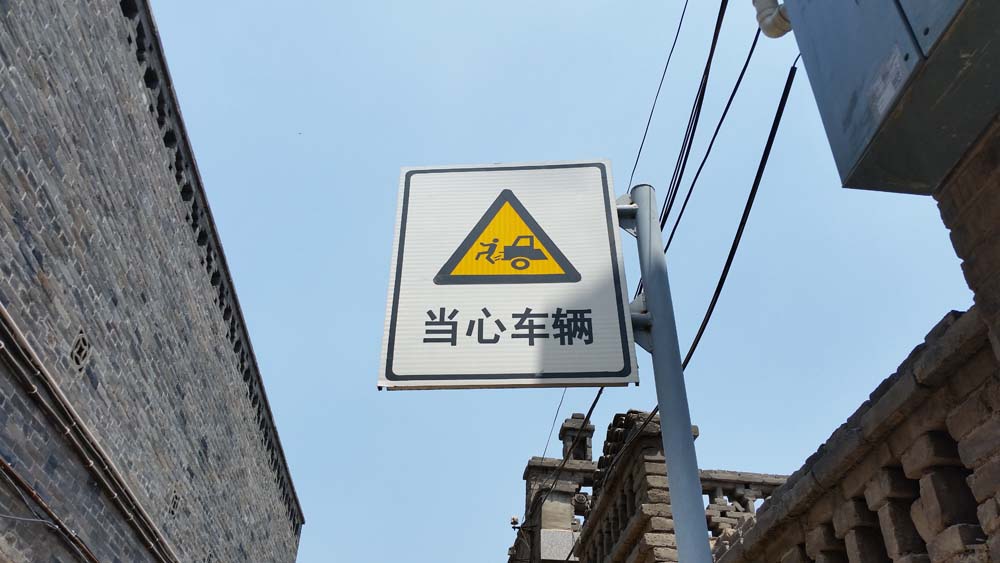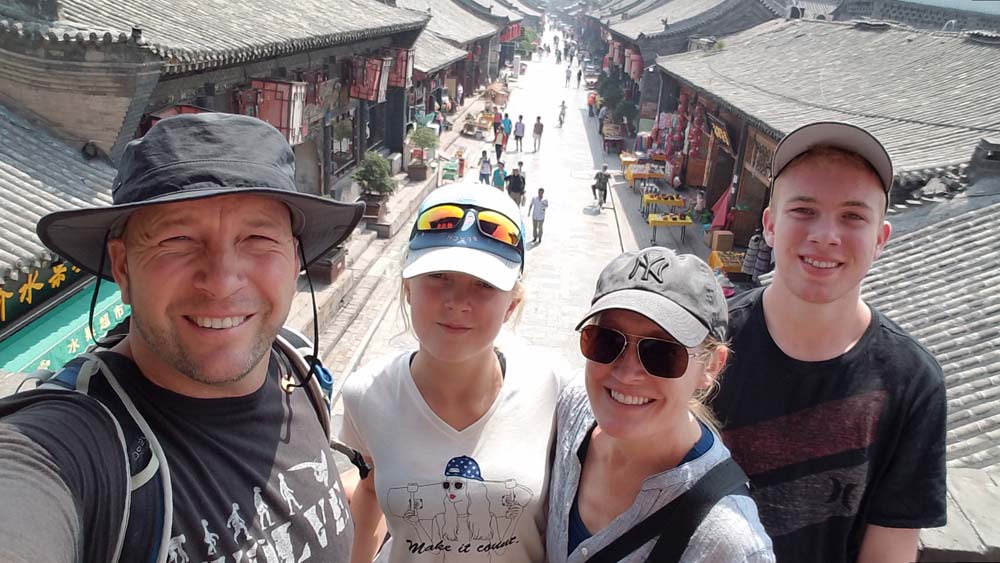 Adventuriety
Adventuriety
Two and a half hours out of Beijing on a bullet train and there is still no sky visible. It looks like June gloom in Central California but it is smog, laying on the ground. Scott points outside and says to the kids, “See the pollution?” Grant replies, “I thought it was fog…are you sure?”
It took us three and half hours to finally see blue skies outside of the train windows and four hours to reach our next destination, Ping Yao.
We arrived at the giant and literally sparkling new train station. In the middle of a huge plaza in front of the station, a statue of a golden bull (because the area is famous for its beef) looks down over the wide new boulevards, beautifully planted with flowers and trees leading up to the station. The train station and multi-lane boulevards are nearly empty because they were built with the future growth of Ping Yao in mind.
We drove through the new part of town; population almost 500,000, built in the last 10 years and still experiencing rapid growth. Ping Yao was and still is a coal mining town in the central Shanxi province with over 1,000 mines. The ancient old town of Ping Yao is a traditional Han Chinese city and has been around since the 14th century. When the old town was designated a Unesco World Heritage site in 1997, the local government decided to focus on tourism as well as coal mining. The ancient part of the town used to have a population of 90,000 but the government moved all of the schools, government buildings and factories to the newer part of town and offered residents of the old town money to move out so tourism could become the focus of the old town. Many people left as the houses are very old, courtyard style with no showers in the bathroom and one toilet per courtyard. It’s still this way, Lisa our guide, explained as she walked us by the busy public showers. Still, some people do not want to leave, especially older generations.
We set off from the hotel on foot (no cars in the ancient town), and immediately Scott spied a narrow alley and asked Lisa what it was. She said it was someone’s home and Scott asked if we could walk down the alley. After checking for dogs, we quietly walked through the old alley. Towards the back, Lisa poked her head behind a curtain and chatted with someone for a few minutes. She explained that she knew the family. We ended up getting invited into the home and the woman that lived there proudly showed us pictures of her daughter, who owned a restaurant and hotel in the old town. We chatted for a while and then walked outside to leave. We were still chatting and Scott asked through our guide what the best and worst changes were that she has seen in China in her lifetime. She replied that she wasn’t good at speeches and went to get her husband. He came outside and told us the hardest time in his life was when China’s relationship with the USSR deteriorated and Mao drove his already starving people even harder to pay back the loans from the USSR ahead of time. The best time in the old man’s life was after Mao died and Deng Xiaoping came into power and helped restructure China’s economy. He told us he would be 80 years old next year and that he had started life as a peasant and then was a worker and wore an armband. He proudly showed us a tiny piece of paper from his cigarettes. On it was printed “USA”.
Coal (in Scott’s hand) is still used to heat water (the teapot is on top of a coal burning stove) and cook in these courtyard homes in Ping Yao. These “stoves” cause many fires, especially in the winter when it is very cold. It is so cold that in modern homes, beds are still built on a raised platform next to a stove with the chimney on the other side to keep the sleeping space warm. Incidentally, the summer is blazing hot and it was blazing hot the two days we spent in Ping Yao.
We wandered back into the streets. There are many shops, restaurants, and hotels. We walked and looked. Lisa explained the five elements of Feng shui: water, wind, earth, gold and wood. This girl was following us and trying to take a picture of Ashley. Finally, Scott went up to her and asked her to take a selfie with him and then she asked Ashley to be in her picture. We were asked quite a few times to pose for selfies with strangers.
This complex is called the County Government Office. It served as the courthouse ( criminal and civil courts had different buildings) from the Qing dynasty until 1997 when all government buildings, schools and factories were moved out of the old city to make room for tourism.
This is one of the the courtrooms. The yellow and black sticks were used to indicate the judge’s verdict and impending punishment.
This tower is accessible from the the County Government Office…
…and offers a great view of the main street.
Ping Yao is very photogenic
Just wandering the streets of the old town is interesting.
There is so much to see and a different and interesting beauty in the everyday, like a haphazard brick wall and a peek into this courtyard.
We found a karaoke bar on one of our evening strolls. There were a few people singing (the guy behind Scott and the girl sitting down) and a handful of people in the bar ignoring them even though they were good. It reminded me of the stellar skaters that worked in roller rinks when I was growing up. They were so good. They could skate backwards and forwards and do “shoot the duck.” So, because of the emptiness of the joint, I guessed these people either worked there or were regulars. Scott walked on stage and that got everyone’s attention; cell phones came out, people stopped talking. There were a few glitches, but he pulled off “One Headlight” and then high-fived the guys sitting at the tables in front of the stage.
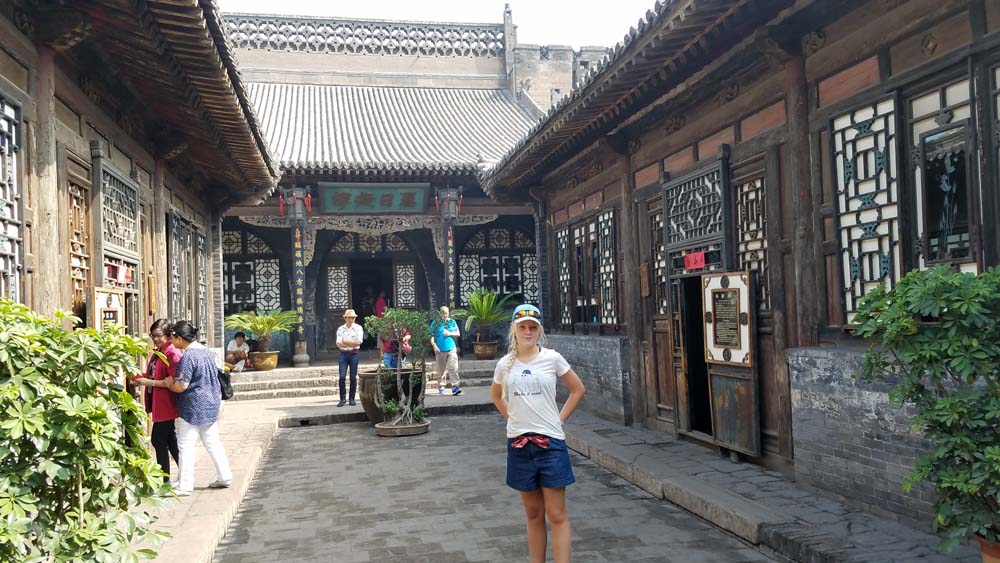
We toured the Rishengchang Exchange Shop, considered the first draft bank in China’s history. It was founded during the Qing Dynasty (1823) by Mr. Lee. Ping Yao was in the center of many important trade routes and these routes became great opportunities for robbers to steal the silver traders used to buy goods so Mr. Lee came up with the idea of carrying drafts instead of silver. This proved to be a great business idea and became the best job in the city, even better than being the Mayor. The job required good looks (seriously), brains, integrity and three years of unpaid training, room and board only. Even after becoming employees, the men had to live at the bank but were allowed to visit their families 5-7 times a year. Mr. Lee served a big dinner every year for his employees. If you were seated next to him you were in good favor, but if you were seated across from him that was a warning. The first time was okay because you would get another chance, another year to prove that you were a valuable employee, but if you were seated across from him at the next year’s dinner and were served fried squid, that was it. The saying, “You’re fried squid” means you are fired and it is still used today.
At this point our conversation turned to the men of today’s China and again I was not only impressed with our guide and her knowledge of Chinese history and Ping Yao’s history but also her willingness to talk about her experiences and the culture right now. She told us that even today men must own a house and a car in order to get married and it’s the man’s parents who provide this, in addition to paying the current “market price” to the bride. A long time ago part of this dowry money went to her parents, but more often now it belongs to the woman and is kept in case of divorce. Lisa said that men are spoiled big boys that are used to having everything given to them. She told us that her parents are farmers and work very hard, yet still had the responsibility of providing an apartment and car for her brother so that he could get married. She has a little boy herself and so we were asking her if she was planning on providing the same for him, She said she will wait and see and hopes to be able to help him out, but not completely. She wants to combine the ways of the past with her ideas about the future.
We climbed the city wall built in the Ming period (15th century) that still encompasses the ancient city and is the reason that Ping Yao is considered one of the best walled cities in the world. The wall is designed in the shape of a tortoise (good fortune and longevity) although I could never see it.
The wall was used to defend the city. There were 3,000 openings for defense shooting and watchmen.
You can see the old city above and the construction of the wall. The wall is 10 meters high (about 33 feet) and 6.2 kilometers for an entire lap. The wall has four main gates; north, south, east, and west and 72 watchtowers. On the far left of the above photo is one of the main gates where we climbed onto the wall. You can also see a watchtower in the middle of the photo.
Views of the old city from our walk along the wall.
I like this photo because you can see the old city, the wall and the new city in the distance…along with the smog.
The view on the other side of the wall looking toward new Ping Yao. This “green space” is being developed to appeal to tourists. This photo is a good representation of China, the old and the new right there together. I am reading a book right now call River Town by Peter Hessler. The author spent two years (1996-1998) as a Peace Corps volunteer teaching English and Literature at a college in Fuhling, a town that would be affected by the Three Gorges Dam and the rising water of the Yangtze. He pointed out that there is so much history in China it is impossible to protect every historically important site, “…if you protected all the ancient sites the people would have nowhere to grow their crops.”
We climbed down these new stairs and back into the old town to continue our tour by way of a new street full of bars and restaurants, another addition for the tourists. Again, examples of the old and new intermixed with what to us seemed like little regard for the old. But to paraphrase my latest favorite book again, River Town, Hessler writes that the Chinese have history everywhere and have been making decisions about it for thousands of years and the decisions are borne of an entirely different perspective.
The new street and one of the bars that promised, “meet as strangers, leave as friends” on the window.
This is the Confucius Temple in Ping Yao. The kids are throwing coins in a pond and in case one is wondering…
…these are the guidelines.
The temple has beautiful and ornate architecture and is just exactly what I think a Confucius Temple should look like.
This bright tapestry is decorated with dragons and is yellow, both important in China. Emperors in ancient China were identified as the sons of dragons and so ordinary people were not allowed to have items with pictures of dragons on them. In addition, only emperors could wear yellow or use the number nine. The number nine you might ask…well, Lisa told us that odd numbers are good because they are balanced when you split them in half. For example, 3=2+1 an even and an odd number-balance.
A path lined with the Chinese Zodiac animals
Ashley is a goat and according to zodiac theory, she may appear delicate and mild mannered, but she is tough on the inside, knows her own mind and is a resilient human. Grant is a dragon, the only imaginary animal of the twelve zodiac animals, he is courageous, tenacious and intelligent. He is also enthusiastic and not afraid of challenges.
Jumping over the Dragon Gate (like Scott) will help ensure success in school or career.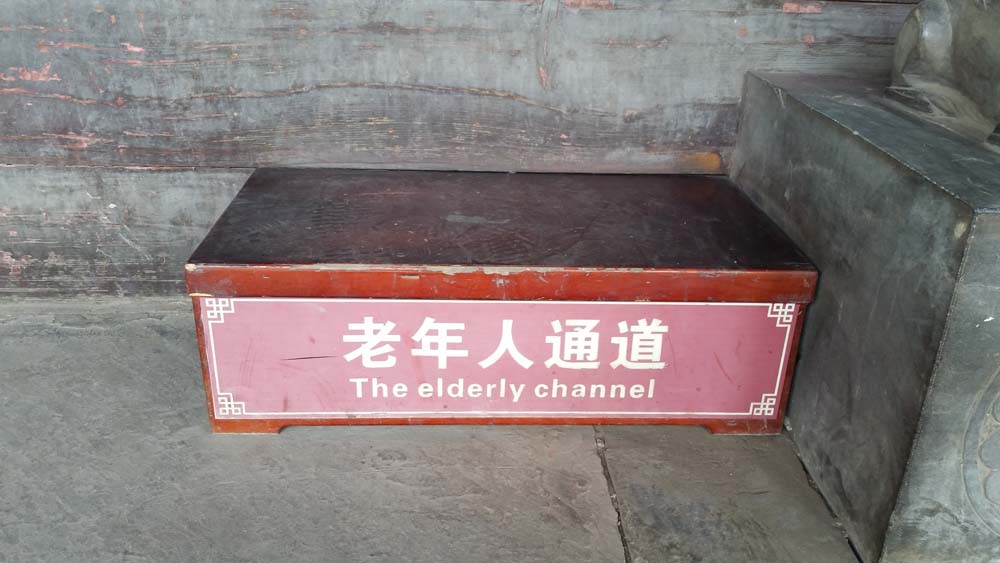
And I couldn’t resist the above signage at the Confucius Temple.
We took a cooking class and learned how to make dumplings because Grant can’t get enough dumplings. We also learned traditional noodle making as well because the dumpling and noodles are made from the same dough Noodles are a very important part of local culture as the people of Ping Yao eat noodles everyday for most meals.
Flour and water and a lot of kneading is the recipe for the dough.
The ingredients that we filled the dumpling with and our dumpling attempts. The braided dumpling are the chef’s, of course. The food is delicious, but heavy and seasoned with a lot of salt. Combine it with the heat and all of the water we were drinking and you feel a bit like a sweaty, lethargic tick.
We drove about twenty minutes into the countryside near Ping Yao to Zhenguo Temple built in 963 and known for its architecture and preserved painted sculptures from Five Dynasties period 907-960. “Jingcheng” was the temple’s original name but it was changed during the Ming Dynasty in 1540. The temple was renovated in 1816 during Qing Dynasty.
There was one room with a female Buddha and frescoes lining the walls depicting what happens if you go to Hell. You have three days to remember your family and reflect on your life and then you drink a bowl of soup and forget everything. The pictures were graphic and horrible and used to teach people to be good. Thankfully, we visited a smiling Buddha statue last. The smiling Buddha statue was fairly new, replacing the old one that had been destroyed. In front of it was the increasingly familiar “No Photos” signage that is abundant in China. I asked Lisa about this Buddha since it was new and would not be damaged by a camera’s flash. It is considered impolite to take a picture with a statue of a Buddha. It is okay to take a picture of a Buddha, but you must display it in a very clean and important place in your house and so most Chinese people will not take a picture of a Buddha.
While the temple was interesting enough it was the drive to the temple and back that was the most fun. Lisa pointed out graves in the fields. In the city people are cremated, but in the county people are still buried on their land, usually under a big tree. She also taught the kids to count to ten in Chinese on their fingers which is more complicated than simply holding up that amount of fingers and she translated our names into Mandarin. And those are the things we really remember about our travels. I have to look up the name of the temple but I’ll never forget the kids trying to pronounce their Mandarin translated names or their renewed interest in counting on their fingers.
Paper cutting is a craft that is famous in Ping Yao and one that Lisa described as “for old ladies” but what she meant was that the older generation are the ones with the talent and it is quite the talent. There was a shop near our hotel and we stopped in for a paper cutting lesson. The woman giving us the lesson decided that we should go to her house for the lesson which was just around the corner.
It was another traditional courtyard house and we sat in a room with three twin-sized beds and she showed us how to make a butterfly and a flower. Our teacher was quick and precise with the razor sharp scissors.
Our butterfly attempts. It’s hard work and my hand got very tired.
This is the courtyard of our hotel in Ping Yao and I don’t usually get that excited about the places we stay, but this place was cool because the hotel is tiny and not only owned locally, but staffed with young local people who want to learn the hospitality business and English. We had a funny discussion about the word gourmet in this environment. Lisa was waiting for us in the lobby and having a conversation with one of the receptionists who was asking her what the word “gourmet” means because a guest had wanted to eat a “gourmet meal” in Ping Yao. Lisa didn’t know the word either and didn’t know the spelling and so we had fun describing the denotation as well as as the connotations of the word.
The kids like to explore on their own and we let them as often as seems responsible. Here was no different, Lisa said it was safe and so they set out to find their own adventures. The interesting thing though was that Ashley didn’t feel safe alone here and so they weren’t gone for long.
We went out and walked around in the evenings. There were a lot of local people out and about shopping and eating.
“Eating Drinking Staying” The words on the window made me want to hang out in this restaurant.
The town is beautiful at night and it’s fun to just wander and look.
The kids had scoped out this virtual reality ride wandering on their own and wanted to try it.
This walnut pastry was another thing that they had found on their own and so we returned together and purchased a box for dessert. They were quite delicious, a soft shortbread cookie with a sweet walnut flavor.
We really liked Ping Yao. It felt far from home and authentic in a really cool “off of the beaten path Chinese tourist town” kind of way. Of course, the historical part was interesting too but I like the other stuff…the people stuff and the people were very friendly. We liked that both evenings we walked around the old town, we saw many people out and about visiting and playing cards and games. Scott and I bought a bottle of beer one night in a tiny shop for locals and the man was so nice. We used google translate to talk to him and it worked. We’ve used it a couple of times and people are amazed by it and enjoy it and seem very happy to communicate.
There were some themes that I am beginning to notice. Chinese people are very straight forward and open which surprises me, since the government seems so secretive and oppressive. Again we were told how important it is to be good looking in China, past and present. Both guides so far say matter-of-factly that they are too fat by Chinese standards (neither one of them is near fat). Lisa told us Chinese women are very concerned with staying fit and wondered if fitness is important to American women. The comments that we are lucky to have a balanced family, one boy and one girl, are continuing. In fact Lisa was telling us about the one child policy and that it was changed last year. It is still very expensive to have children (especially boys), nonetheless most young people want a child. If a couple can afford two children, then they want a boy and a girl and often will check the sex of the baby and get an abortion if it’s the wrong sex. Abortions are easy to get, especially in the country. Women have been getting abortions for years and there doesn’t seem to be the emotional or social stigma attached. A woman cannot be forced to get an abortion, but if she wants one, she must get the permission of her husband’s family. Lisa even told us that her sister was pregnant with her 2nd boy and refused an abortion. There was a big family argument because her husband and husband’s family wanted a girl. It is so interesting to me that we would have these conversations casually about topics that seem at least private and certainly controversial. I guess it’s just parts of history and the internet that is off limits.
Lastly, the summer weather in Ping Yao was very hot, reminiscent of Beijing, and similarly, it sprinkled on us our last morning in Ping Yao. I took it as a sign of good luck.
And one more funny sign…for the road…literally!


